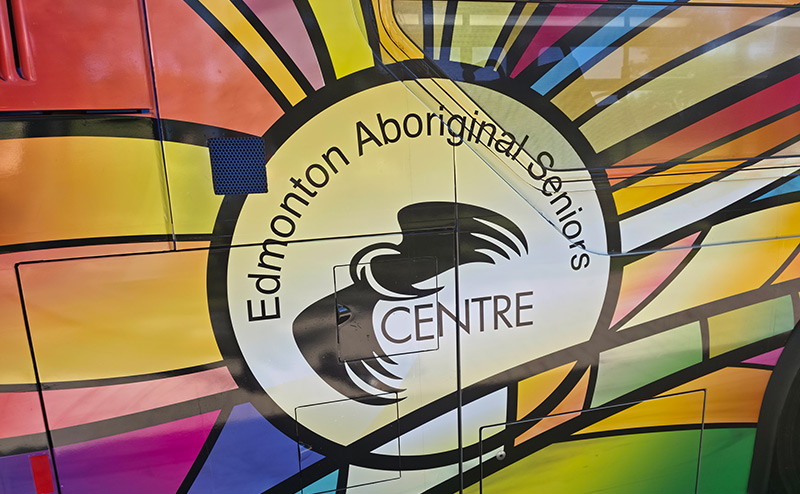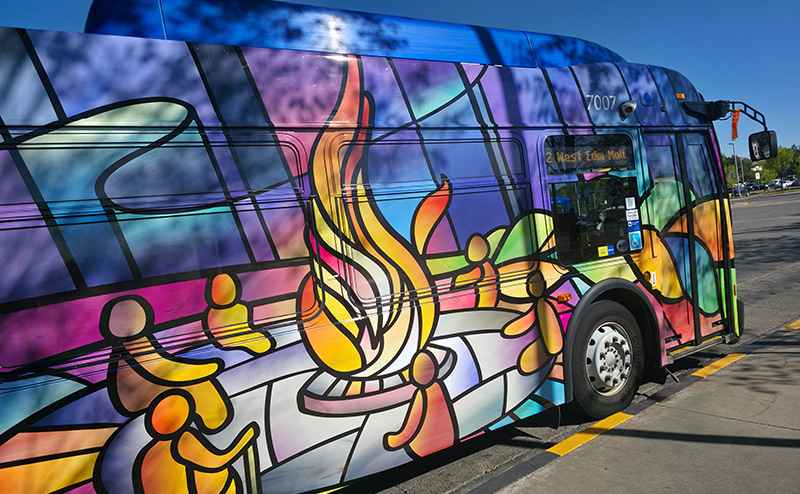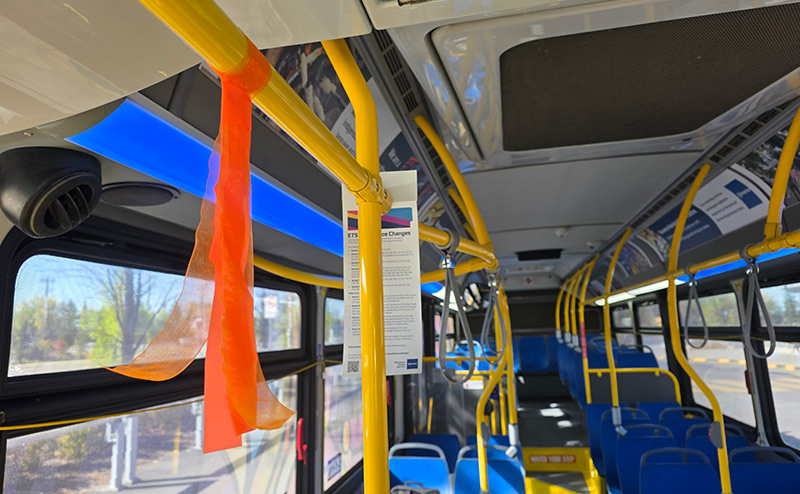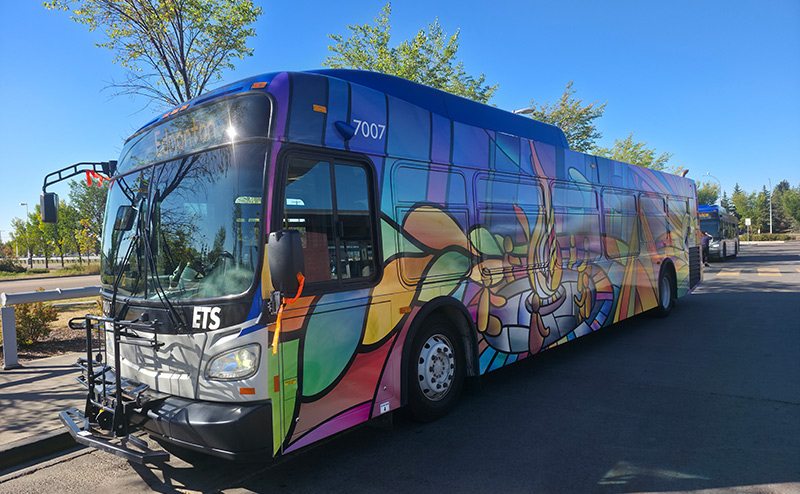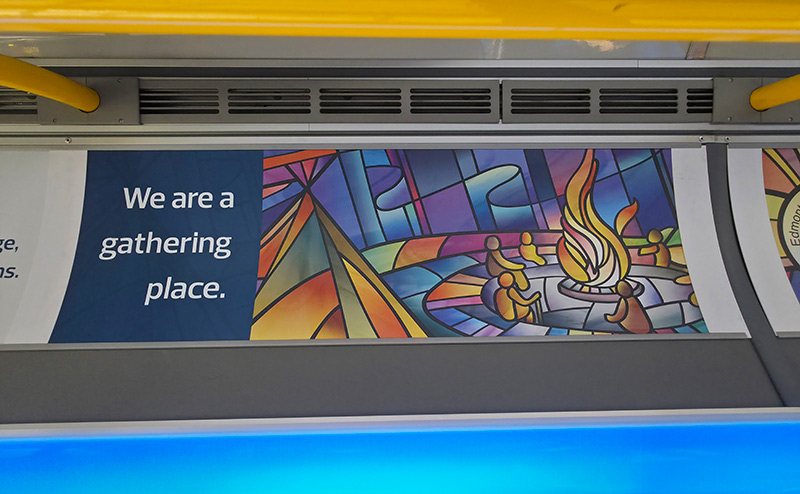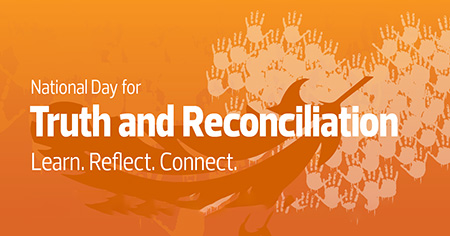
September 30 marks the National Day for Truth and Reconciliation, which honours residential school survivors and the children who were never returned home, as well as their families and communities.
The Truth and Reconciliation Commission of Canada outlined 94 calls to action to advance reconciliation with Indigenous Peoples in Canada. The National Day for Truth and Reconciliation was created in response to Call to Action No. 80 and to ensure that public commemoration of the history and legacy of residential schools remains a vital component of the reconciliation process.
The City of Edmonton and Edmonton Police Service recognize September 30 as a paid day of leave for staff.
How the City Commemorates the Day
The City's strategy includes public awareness, educational initiatives with Indigenous partners, ceremonial events, Indigenous art displays, support for Indigenous-led initiatives, implementing the Truth and Reconciliation Commission's Calls to Action and community engagement.
These efforts foster remembrance, learning and reconciliation.
- Flags outside Edmonton City Hall are lowered to half-mast
- Every Child Matters banners are raised in Churchill Square
- The following facilities are lit orange: High Level Bridge, Walterdale Bridge, City Hall, Muttart Conservatory, Commonwealth Stadium, Edmonton Tower and Rossdale Power Plant
- Orange ribbons are placed on City fleet vehicles
- City staff are encouraged to wear orange shirts and pins
- Edmonton City Hall displays the Survivors’ Flag, a symbol of remembrance that honours the lives and communities affected by residential schools
- In partnership with the Edmonton Arts Council, the City will host lunchtime programming all month that will include local musicians and performers on September 27 and 28
- Crosswalk art re-painted at ᐄᓃᐤ (ÎNÎW) River Lot 11∞ Indigenous Art Park, 10380 Queen Elizabeth Park Road
- Two traffic control boxes re-wrapped in Indigenous artwork, one at Parsons Road and 23 Avenue and the other at 23 Avenue and 111 Street
Truth and Reconciliation
The City of Edmonton is focused on 28 commitments that respond to, or were inspired by, the Truth and Reconciliation Commission's Calls to Action.
What is Orange Shirt Day?
Orange Shirt Day is a legacy of the St. Joseph’s Mission Residential School commemoration project held in Williams Lake, British Columbia, in the spring of 2013. This day was inspired by Phyllis (Jack) Webstad's story of having her new orange shirt taken away on her first day of school at the mission.
Since then, Orange Shirt Day has become an opportunity to continue meaningful discussions on the legacy of residential schools and to support the reconciliation process. September was chosen because it marks the back-to-school season and reflects the time in which Indigenous children were taken from their families to be placed in residential schools.
Wearing Orange on September 30
Wearing an orange shirt or orange attire on September 30 honours the lives affected by residential schools and demonstrates solidarity with Indigenous community members.
Video Resources
These video resources are suitable for all ages to learn about the National Day for Truth and Reconciliation, Orange Shirt Day and the legacy of the residential school system. Thank you to all the Elders and Knowledge Holders for sharing their truths and teachings.
Introduction to Truth Telling Teachings
Maintaining My Inuinnaqtun Language
Medicine Teachings with Elder Francis Whiskeyjack
Reconnecting to Culture Through Hide
Blue Quills Residential School: A Survivor's Story
Support Services
If you need more support or information, these services are available 24/7 to help:
| Organization | Telephone |
|---|---|
| National Residential School Crisis Line | 1-866-925-4419 (toll-free) |
| Hope for Wellness Help Line | 1-855-242-3310 (toll-free) Support available in English, French, Ojibway, Cree and Inuktitut |
| Alberta Health Services Mental Health Help Line | 1-877-303-2642 (toll-free) |
| Canadian Mental Health Association Distress Line | 780-482-4357 (HELP) |
Frequently Asked Questions
Bill C-5 is a legislative change that was introduced and passed to create the National Day for Truth and Reconciliation, an annual federal statutory holiday on September 30. The intended purpose is to “respond to the Truth and Reconciliation Commission of Canada’s call to action number 80 by creating a holiday called the National Day for Truth and Reconciliation, which seeks to honour First Nations, Inuit and Métis Survivors and their families and communities and to ensure that public commemoration of their history and the legacy of residential schools remains a vital component of the reconciliation process.”
The Truth and Reconciliation Commission was launched in 2008 as part of the Indian Residential Schools Settlement Agreement. Goals and activities centered around truth-telling of the tragic impacts of residential school experiences and actions needed to guide a reconciliation process in Canada. From 2008 to 2015, the Truth and Reconciliation Commission collected historical documents and heard testimony from over 6,500 witnesses impacted by the residential school system. In 2015, the TRC released a 6-volume final report called Honouring the Truth, Reconciling for the Future.
The Truth and Reconciliation Commission final report documents the cultural genocide inflicted by Canada’s residential school system and the experiences of approximately 150,000 Indigenous residential school students. The report identifies 94 calls to action to redress the legacy of residential schools and advance the process of Canadian reconciliation.
Contact Us
Indigenous Relations Office
Community Services
18th Floor, Edmonton Tower
10111 104 Avenue NW
P.O. Box 2359
Edmonton, AB T5J 2R7
Email indigenousrelations@edmonton.ca
Phone 780-944-7602


